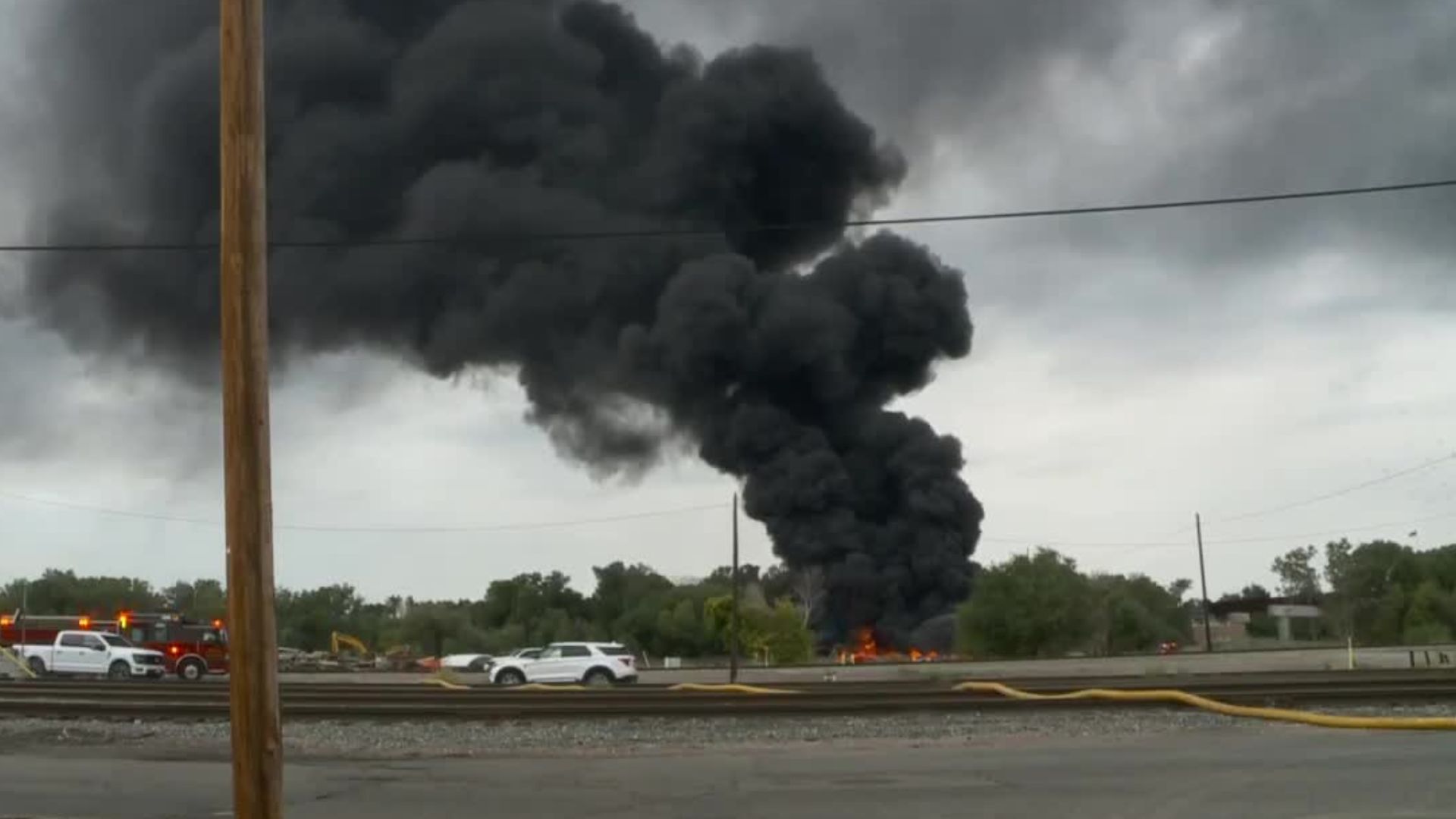OGDEN, Utah — A thick plume of black smoke could be seen rising from a large fire in Ogden on Tuesday afternoon. The Ogden Fire Department said a railyard full of plastic construction pipe near 21st Street had caught fire.
"It's black, like, plastic pipe, like 3 foot, 4 foot, very flammable, and once it catches on fire, it's hard to put out," said Ogden Fire Chief Mike Slater.
No injuries were reported and no homes were threatened in what was initially believed to be a grass fire, prompting the original call.
Fire officials give update on railyard fire in Ogden below:
"We initially, originally had 18 firefighters from Ogden that showed up," explained Slater. "We requested some brush trucks from the other agencies to help keep it out of that wooded area. They responded, so we have help from all departments all over Weber County that are here to help us."
Video shows large flames burning at Ogden railyard fire (Stephanie Gray):
A bus bridge was temporarily activated for the UTA FrontRunner due to the fire that ran between Ogden Central Station and Roy Station. That bus bridge was discontinued just after 1:30 p.m. and regular service has resumed.
"UTA and Union Pacific were great to make sure no trains came through because it is on the other side of the tracks," said Slater.
Video below shows fire burning in Ogden off I-15 (Krissy Collins):
Dr. Randal Martin, a research associate professor at Utah State University, said even though these types of fires usually quickly disperse, the chemicals still need a place to land.
“If you have plastic pipes, probably polyvinyl chloride, something along those lines, that then gets released into the atmosphere. These non-wildland fires that typically have some other source generally have some other chemical compounds that we need to be concerned about,” Martin said.
Martin added that if you smell something in the air, like a fire, it means you could still be exposed to it. He said it usually deposits on nearby surfaces and causes a greasy-looking smoke deposit.
Tuesday’s rain wasn’t a bad thing for the fire’s aftermath.
“With the rain by itself, doesn’t necessarily mean it will scrub out the atmosphere, but combine that with the dynamic atmospheric wind patterns, it generally tends to blow it out fairly quickly," Martin said.





